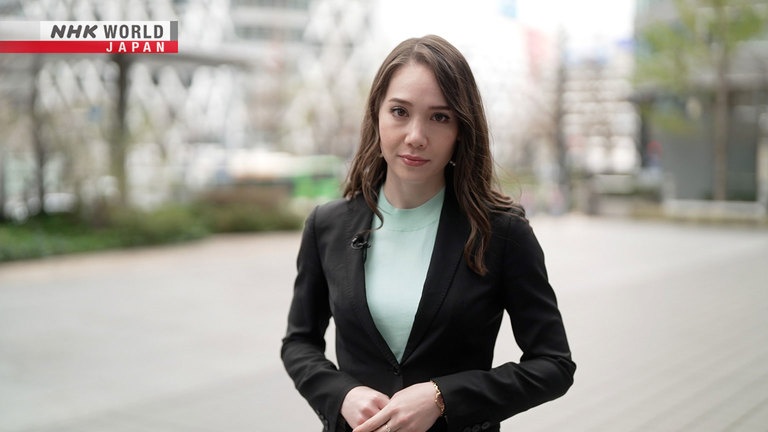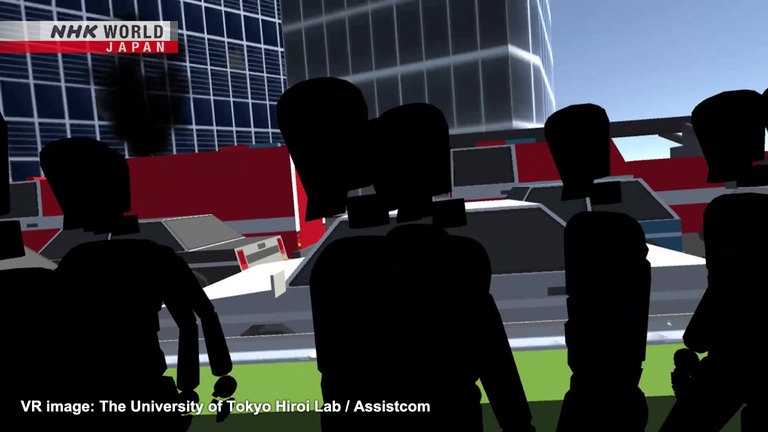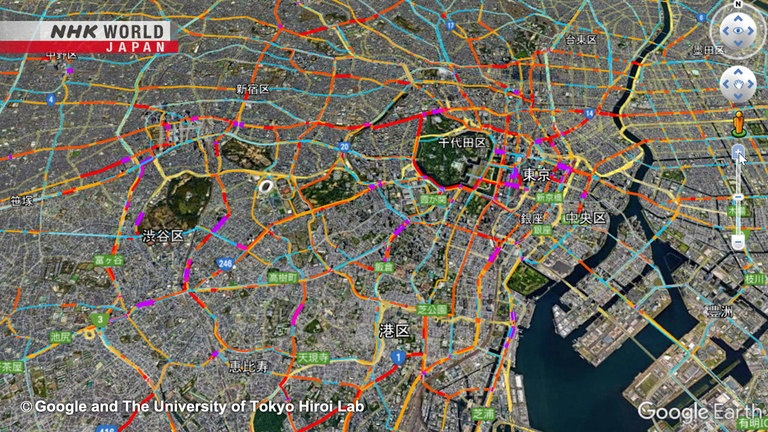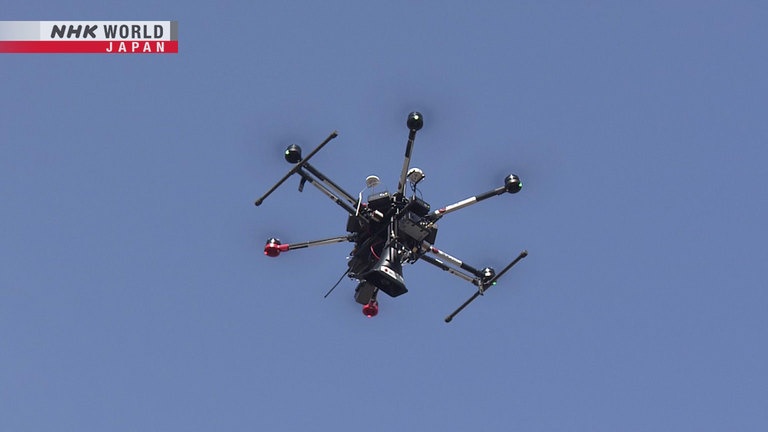#18 Human Stampede
What is a human stampede? It is a disaster in which people are so crowded together that they push and squeeze against each other, making it hard to breathe. It can also cause a person to fall, triggering a domino effect that results in casualties. In the past, human stampedes have taken the lives of countless people. In Japan, there is a high risk of a mega-quake hitting directly beneath the Tokyo metropolitan area in the near future. If this occurs, up to 8 million people are expected to be stranded in the city, creating a high possibility of human stampedes. What can we do to prevent casualties? Find out about the latest research on crowd safety.




Transcript
Japan has a long history of natural disaters.
Now, power of science is helping to overcome them.
BOSAI: Science that Can Save Your Life.
In 2011, the Great East Japan Earthquake hit the Tohoku region.
Even in Tokyo, more than 300 kilometers away from the epicenter, the earthquake brought to light that urban areas were much more vulnerable than had been anticipated.
The metropolitan area was flooded with people who could not get home.
The Cabinet Office estimated that 5.15 million people were left without the means to return home, causing chaos in train stations and on the streets.
This problem of stranded people could potentially turn into a major disaster.
A mega-quake, that has a 70% chance of hitting the Tokyo metropolitan area within the next 30 years, could trigger this disaster.
It is estimated that up to 8 million people will have trouble getting home, which is far more than the Great East Japan Earthquake.
And the disaster that could occur in such an event is a human stampede.
In large cities, we need to be aware that danger not only lies in collapsed buildings and fire, but also in crowded places.
When panic occurs in dense crowds, it can cause a human stampede.
Today, we will find out how to survive a human stampede and learn about the latest research on crowd safety.
A human stampede is a disaster in which people are so crowded together that they push against each other, making it hard to breathe.
Or if one person falls, it can cause a domino effect, resulting in fatalities.
The deadliest human stampede in recent history occurred in Saudi Arabia, which claimed the lives of 2,181 people making a pilgrimage to Mecca.
In Japan, 11 people were killed and 247 injured, when spectators fell over in a packed pedestrian overpass during a fireworks display in Akashi City, Hyogo Prefecture.
Now, how dangerous would it be for people to be crowded together during the mega-quake predicted to hit Tokyo?
To find out, we visited Professor U Hiroi at the University of Tokyo Graduate School who investigates the prevention of crowd safety among people stranded in urban areas.
Tokyo can become overcrowded even in a non-disaster situation.
This is Shibuya in 2019 on Halloween night.
Don’t stop, keep walking.
In the event of an earthquake,
crowds aren’t usually controlled like this.
It could trigger a crowd collapse
or a sort of domino effect.
To help people visualize the dangers of such dense crowds, Professor Hiroi has developed a VR content that lets you experience the difficulty of returning home in the event of a megaquake in Tokyo.
May I give it a try?
Sure.
This is a simulation of overcrowded streets
flooded with people trying to get home.
There’s so many people walking.
Yes, it’s pretty crowded.
It’s hard to move freely with so many people.
I don’t know which way I should go.
Here’s another tremor.
The ground is shaking.
It’s frightening when tremors strike
in this situation.
If a few people start running,
there’s danger of falling over.
When more tremors hit in an overcrowded situation, the fear of not being able to escape could cause panic and people falling over.
Also...
Now try looking down.
It’s hard to see the ground.
After a major earthquake, the road surface may be damaged.
And in a densely packed situation where you can't move, there's a risk of tripping over and falling because you can't see where you're walking.
This could lead to a human stampede.
Now, here's a view from a different position.
The view changed with a push of a button.
It’s much lower.
This is a child’s standpoint.
You’re experiencing what a 100 cm-child
would go through in a crowd.
It’s more terrifying.
It was scary from a child’s perspective,
since all I could see were people around me.
Children and the elderly are often
killed in human stampedes.
We need to share with the entire society that the dangers we are creating
cause children to fall victim.
Looking at the Akashi incident, 9 out of 11 people who died were children and 2 were elderly.
During a disaster, where does a human stampede begin?
Professor Hiroi conducted a simulation in which 5 million people in Tokyo and 3 surrounding prefectures start heading home on foot all at once, after a megaquake hits the Tokyo metropolitan area during the daytime on a weekday.
He focused on where people would most likely gather.
This is Tokyo. If you zoom in,
there are areas marked in pink.
Everyone is heading home at once
during the day on a weekday.
These are places where you’ll find
6 people or more in 1 square meter, or an area of a telephone booth.
This simulation predicts
where overcrowing would occur.
So many places.
With a crowd of 6 people or more per square meter, the pressure on each individual rises and can cause a human stampede.
Professor Hiroi found that there were more than 30 such locations in Tokyo one hour after the quake.
Calculating the total distance of overcrowded roads in the entire Tokyo metropolitan area, it was 137 times that of the Great East Japan Earthquake.
The simulation also indicated specific locations that were especially dangerous.
What kind of places are prone to overcrowding?
For example, the intersection of 2 wide streets
or the point where a sidewalk narrows.
Bridges also cause people to crowd
and can lead to accidents.
It is also known that people are likely to gather at train stations.
Even if the trains are not running, we have a tendency to think we can get new information there, increasing the risk of overcrowding.
An experiment was conducted at Osaka Institute of Technology to see how much force is exerted onto the body when overcrowding occurs.
The conditions of the Akashi accident were recreated with more than 14 people per square meter.
The force applied to the wall on the right was measured to hit up to 270 kg per meter of width.
The force at the Akashi accident was enough to bend a stainless steel pipe.
According to the experiment, the person facing the wall was subjected to a force of 121 kg from the front and rear.
A survey conducted on the participants revealed that more than 90% had difficulty breathing or were suffocating.
What can we do to prevent stampedes caused by overcrowding?
It’s caused by everyone walking home
all at once.
It’s important not to go home
at the same time.
If half give up going home,
it will greatly alleviate overcrowding.
Of course we all want to get home,
but it’s very important not to.
To prevent yourself from being involved in a crowd accident during a disaster, it is important to stay put in a safe place, rather than trying to return home.
Now, various efforts are being made to help people evacuate smoothly to safe places during emergencies.
Shinjuku is one of the most densely populated areas in Tokyo.
Overcrowding is of particular concern in the event of a disaster.
If disaster strikes during the daytime, it's important to head to a safe place.
However, it is difficult to understand your surroundings, stay calm and make good decisions.
This could lead to the concentration of people all at once.
To solve this problem, an expert is working to develop a system in Shinjuku that allows people to calmly evacuate to a safe place and feel secure without having to return home.
This is Professor Masahiro MURAKAMI of Kogakuin University.
You’re creating a system that
helps avert human stampedes.
Yes, we’re using drones to prevent
human stampedes in Shinjuku.
Drones?
Yes, drones.
Before, our means of gathering and
transmitting information were limited.
For example, surveillance cameras,
cameras on top of buildings, and speakers were fixed to a spot.
We now use drones as it has more mobility
to gather and transmit information.
This is the drone that's being used.
This is an ultra-high magnification camera.
Crowd conditions are checked in real time using high-performance cameras and infrared sensors installed on the drone.
All trains are stopped
due to the earthquake.
Loudspeakers inform the public about train operations and locations of temporary shelters for those who are stranded.
This helps to disperse the evacuation.
Information gathered from the drones are shared promptly with Kogakuin University, Shinjuku City, and local businesses.
Demonstration tests are being conducted repeatedly to help prevent overcrowding and the loss of lives.
I think this was made possible due to
the unique features of Shinjuku.
There are many experts in this big city
and we all joined up to prevent or mitigate disaster.
I couldn’t have done this alone.
They are also working with the region to develop a system that notifies smartphones about information on train operations and temporary shelters.
A kit is being designed to help the managers of these shelters respond smoothly in the event they open the doors to people who are stranded in the area.
Today, I learned that crowds could turn extremely dangerous under certain conditions.
I also learned that if a major earthquake strikes while you are out, it is important to make the decision "not to go home" in order to prevent being stuck in a crowd disaster.
I’d like to discuss this with my family and friends and prepare ways to confirm each other’s safety by utilizing services such as disaster message boards, social media and other means.